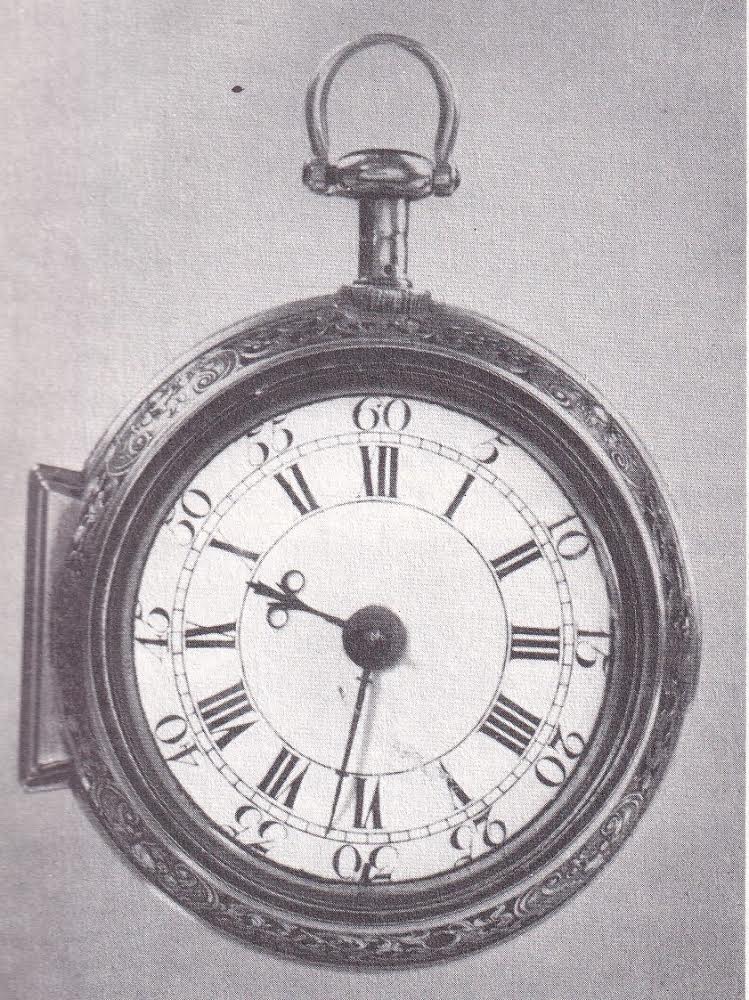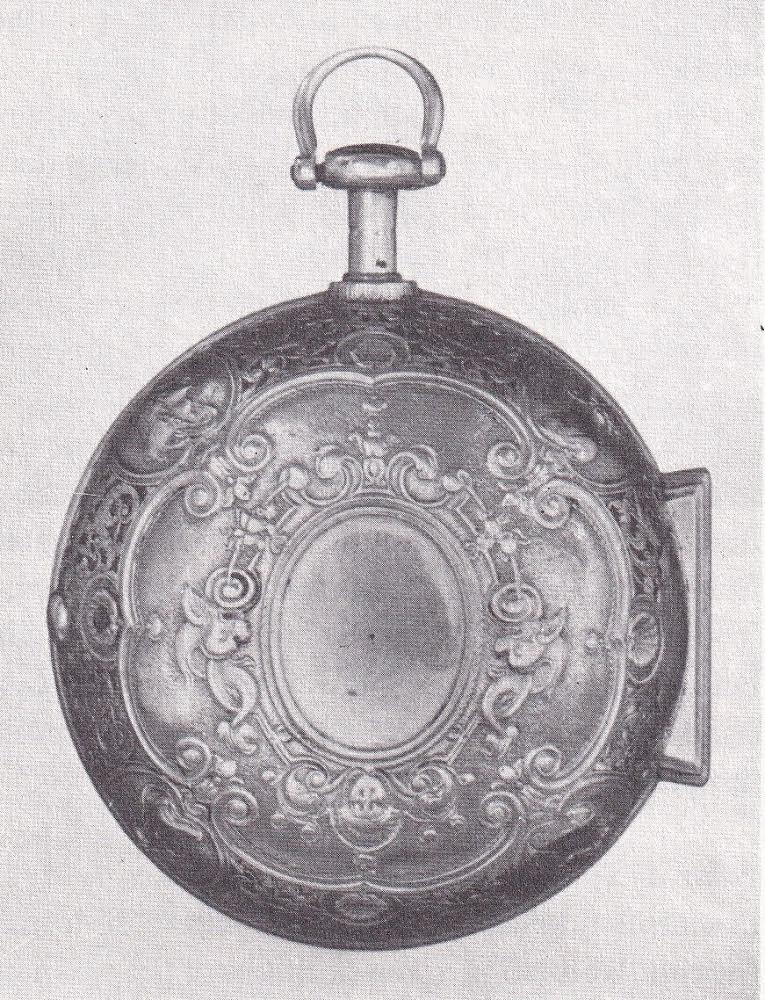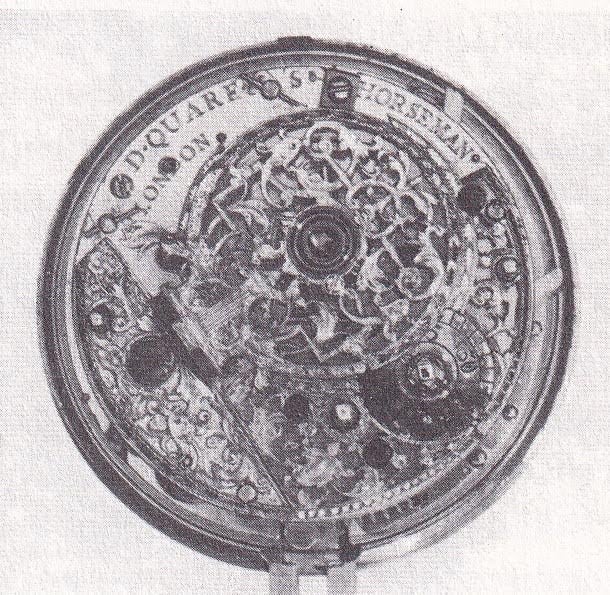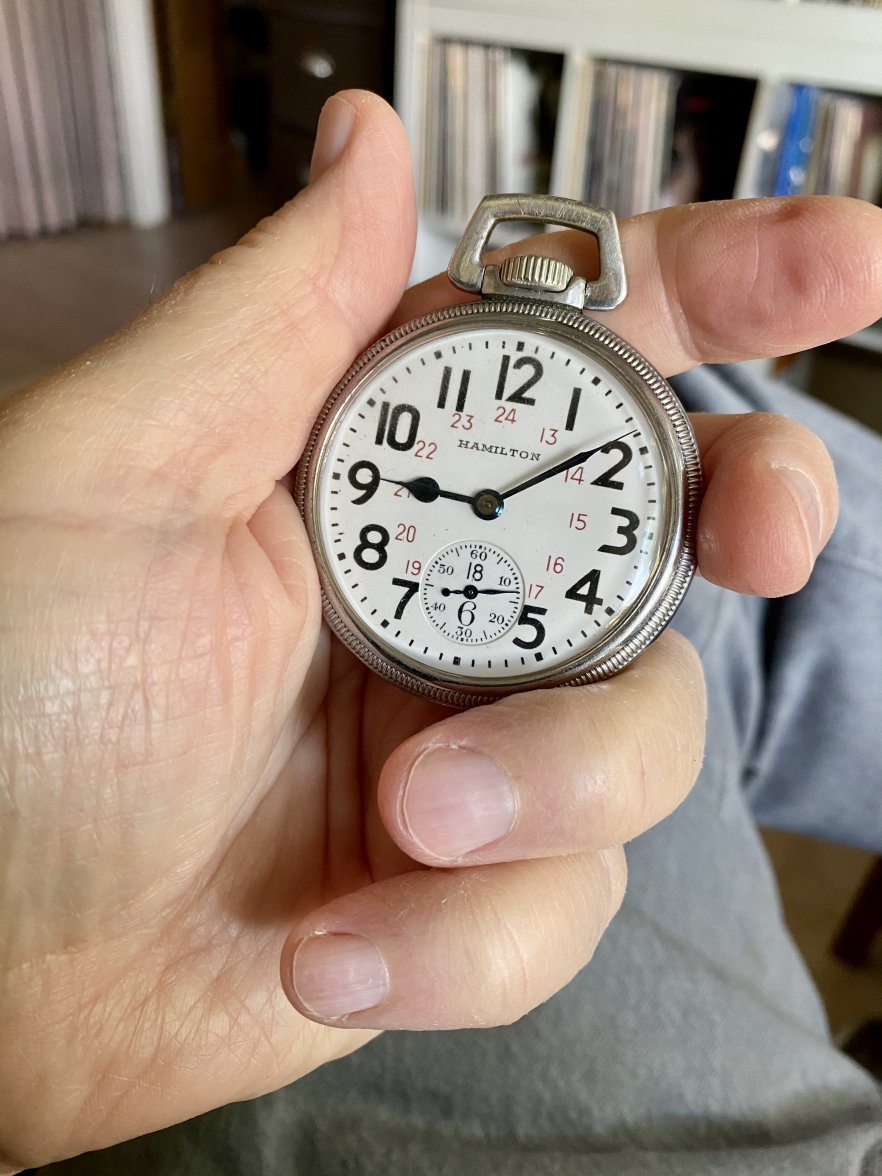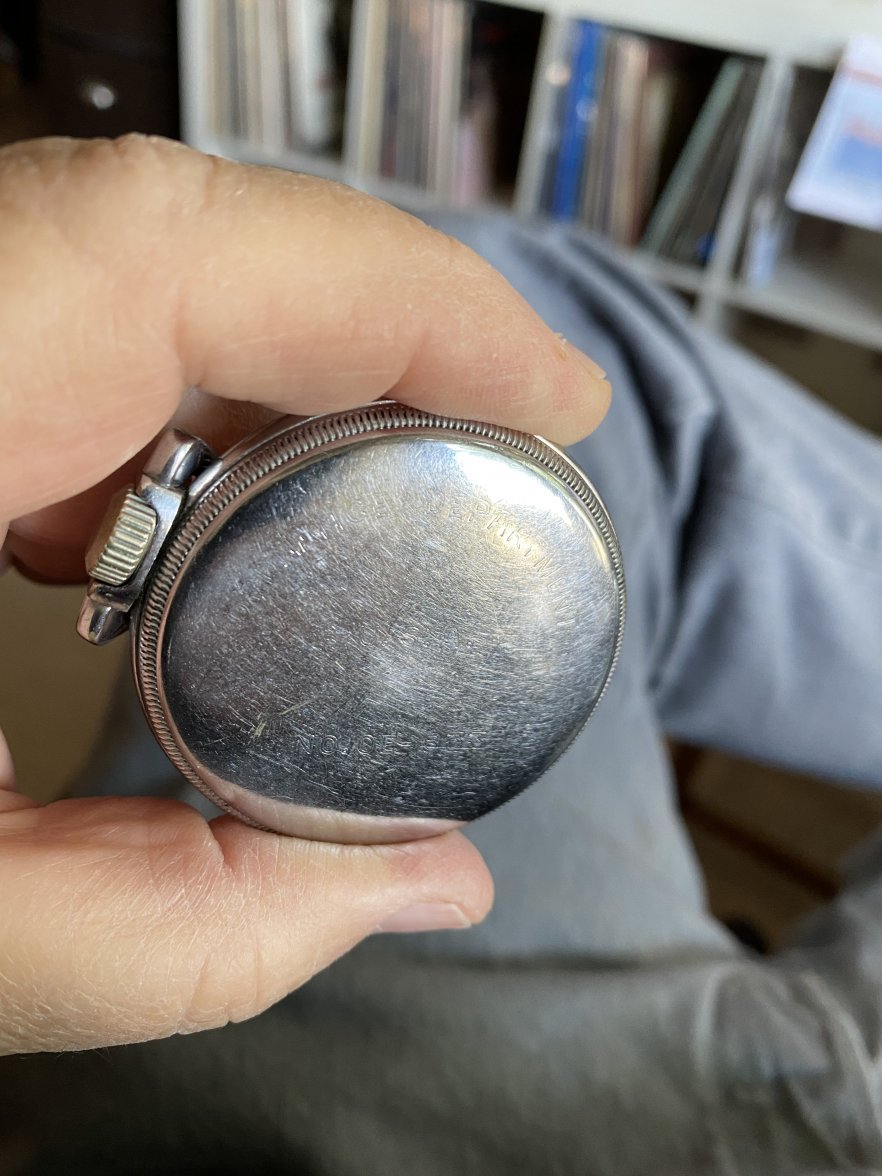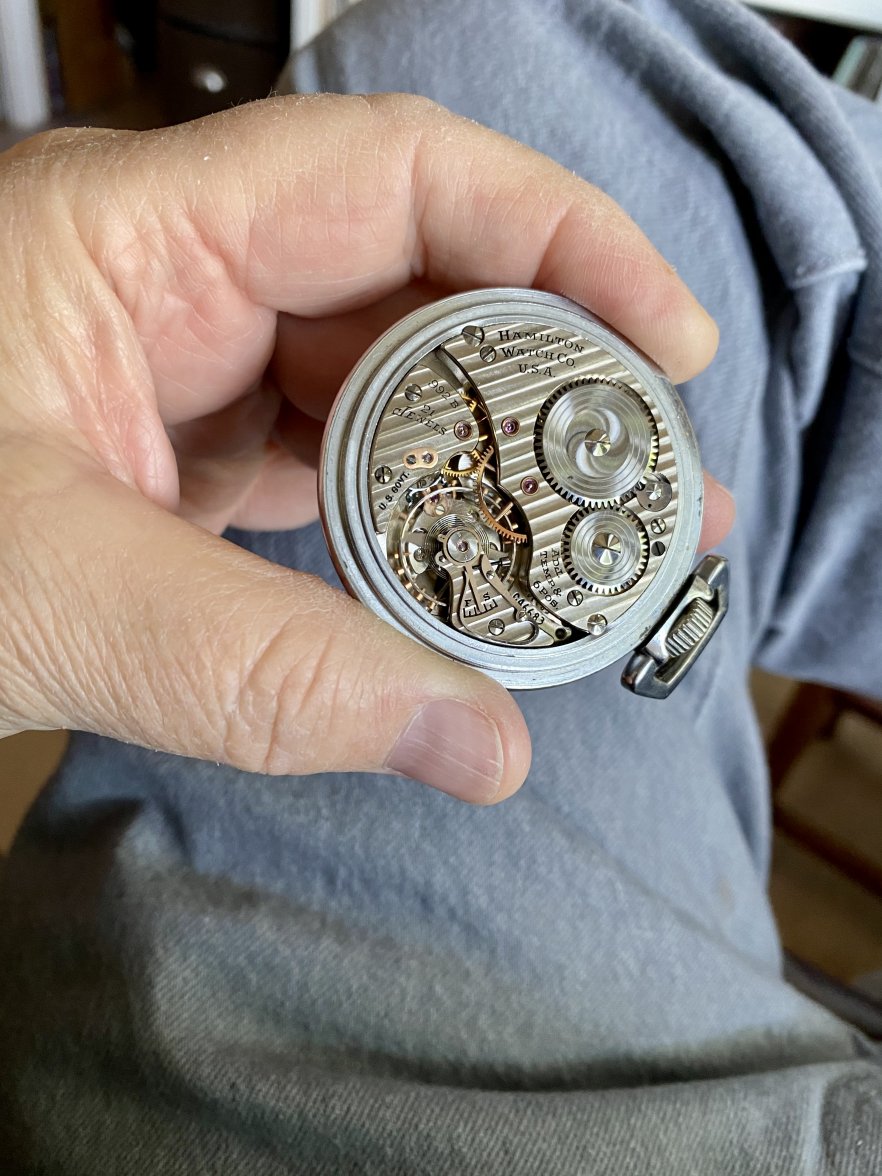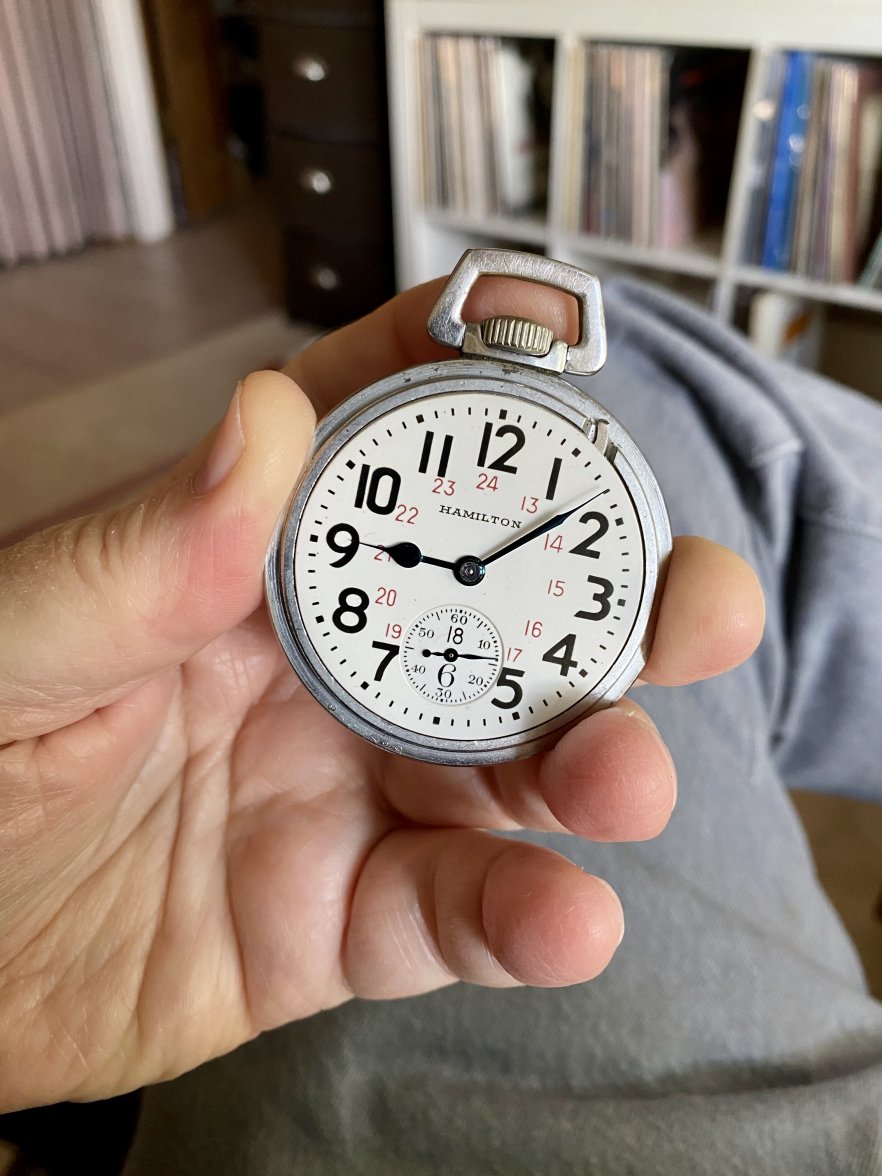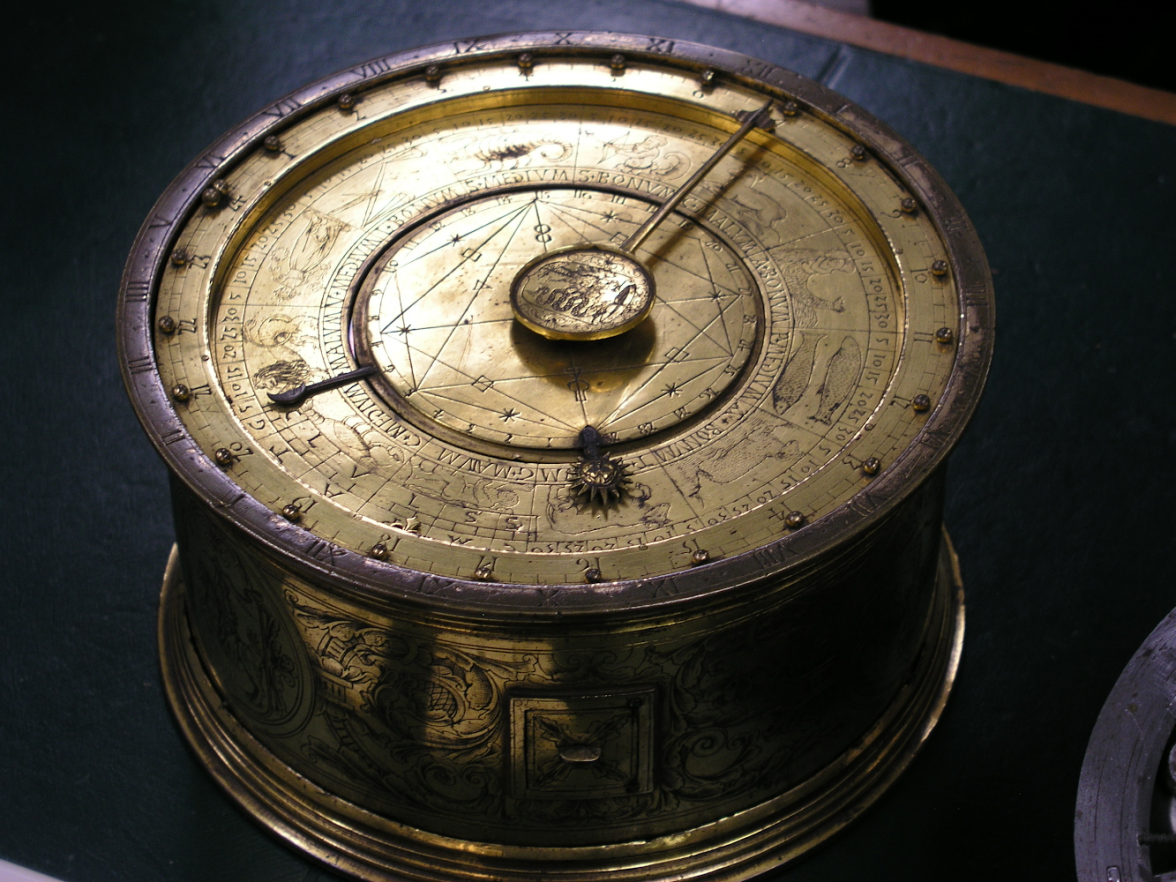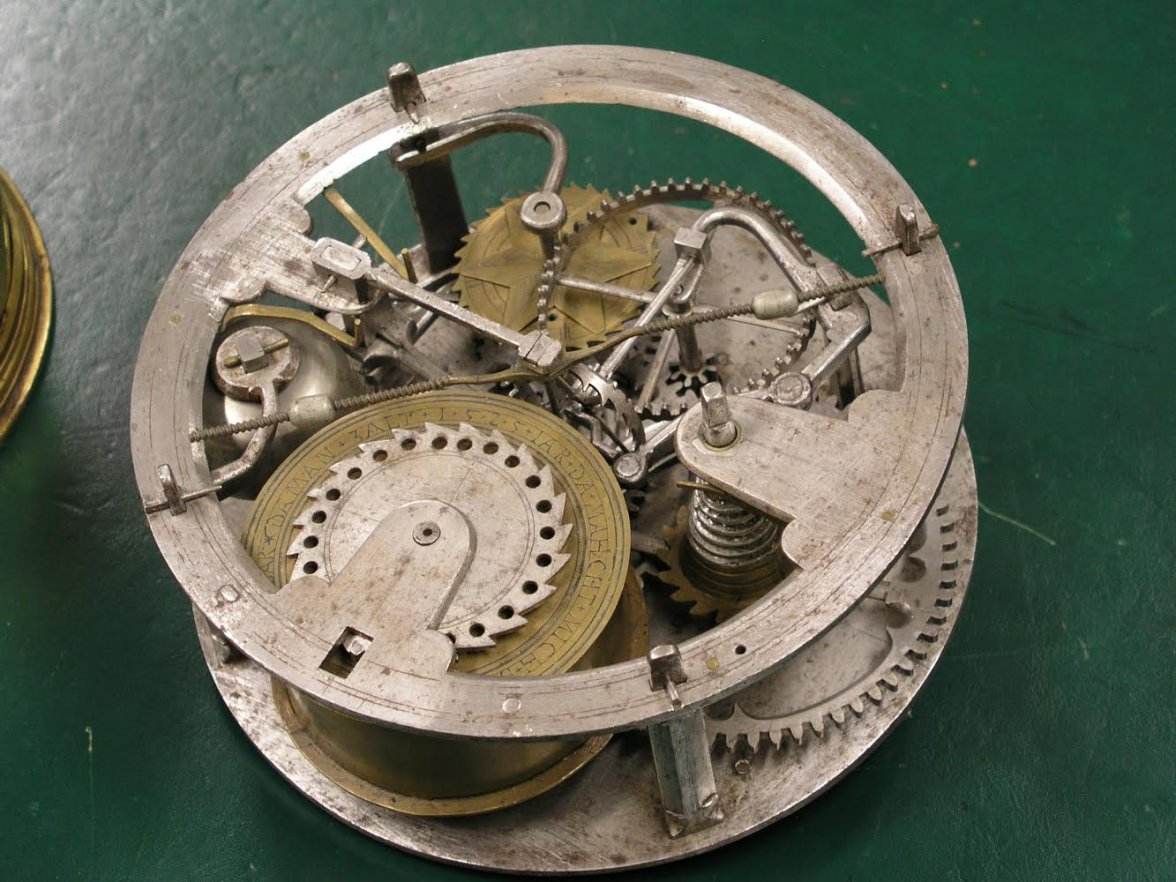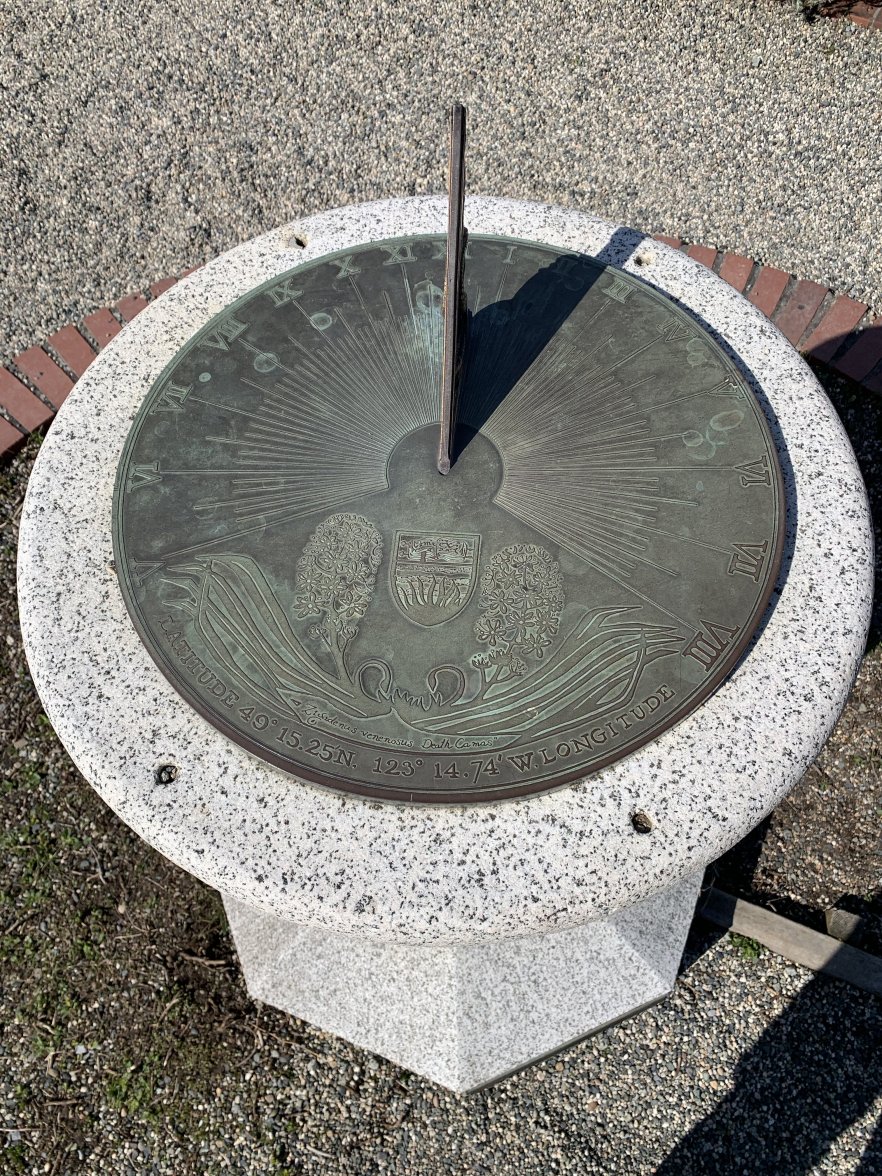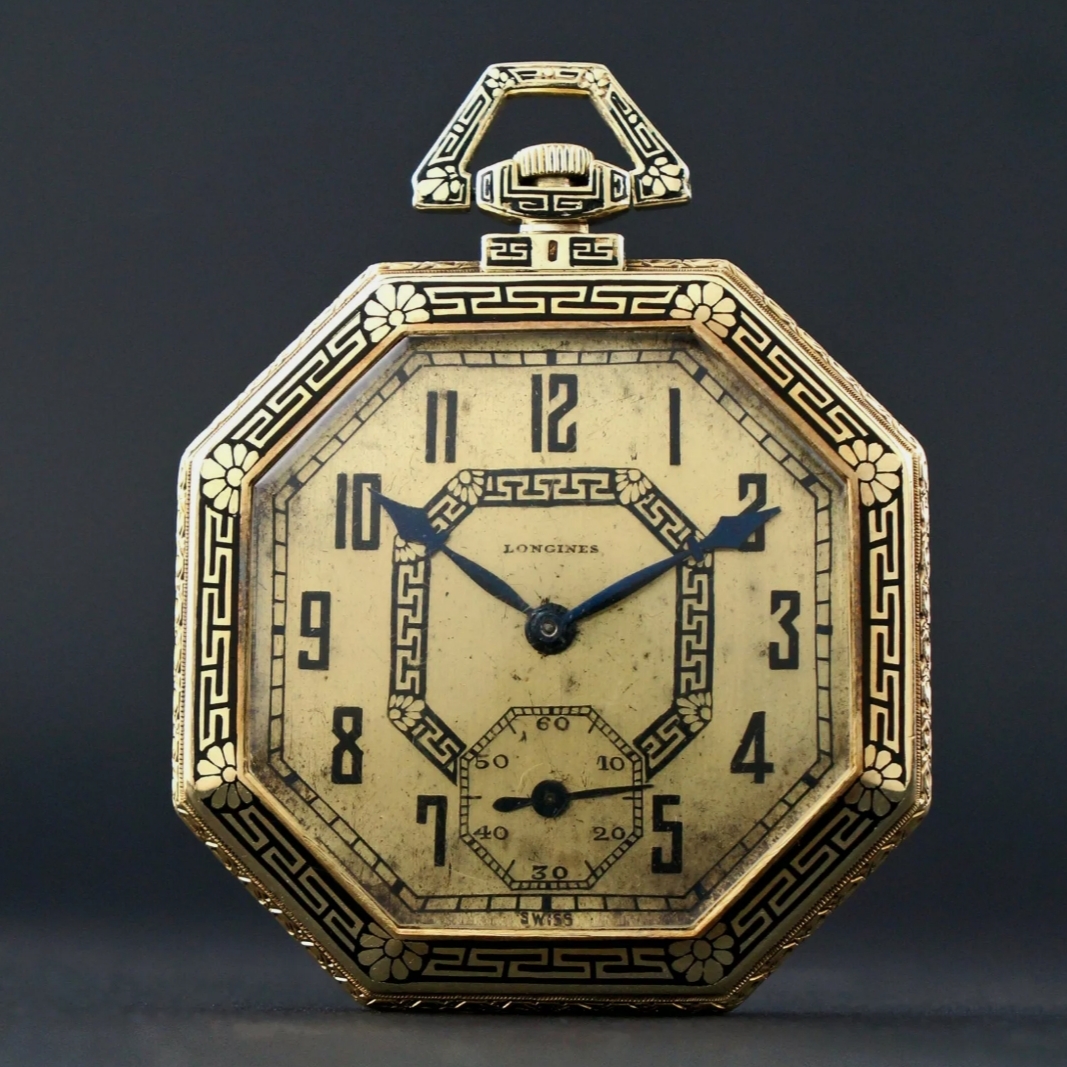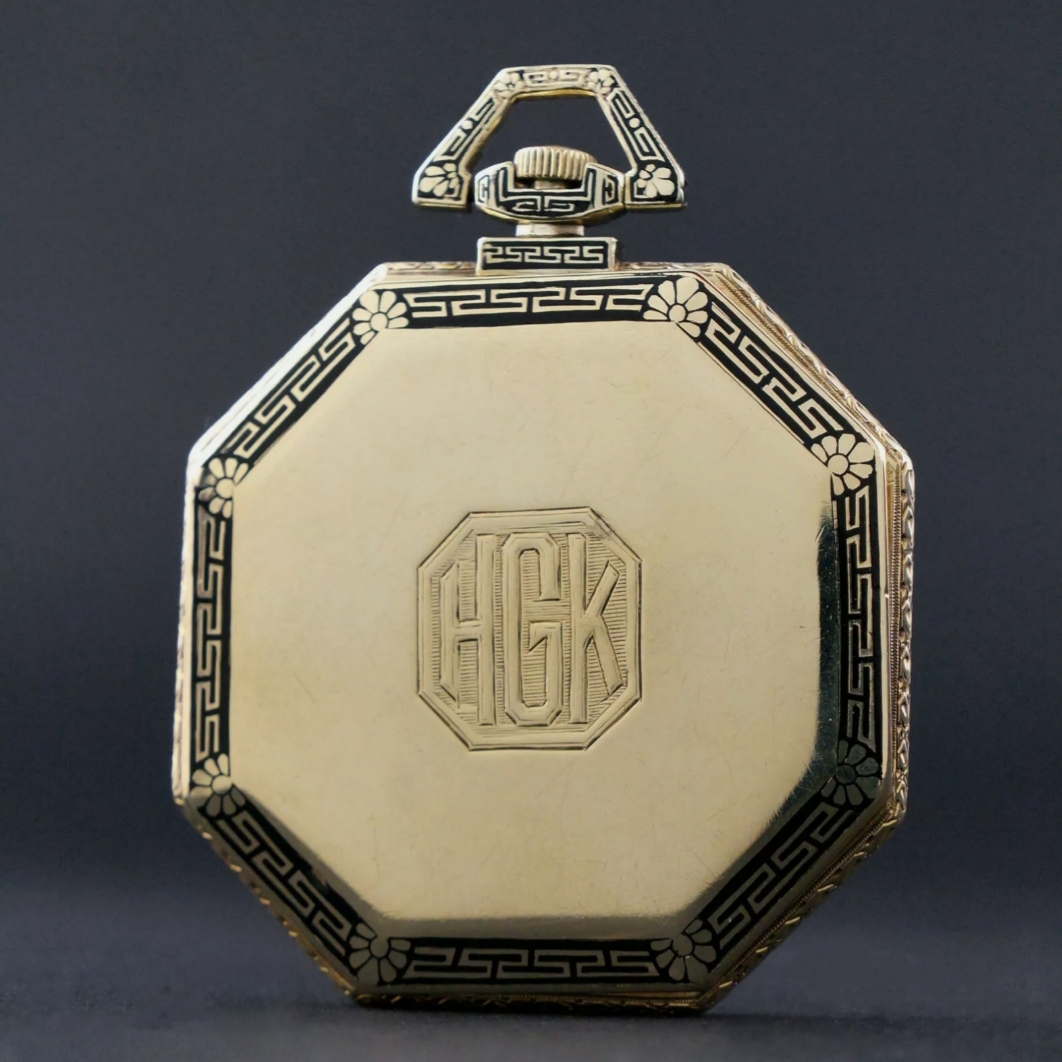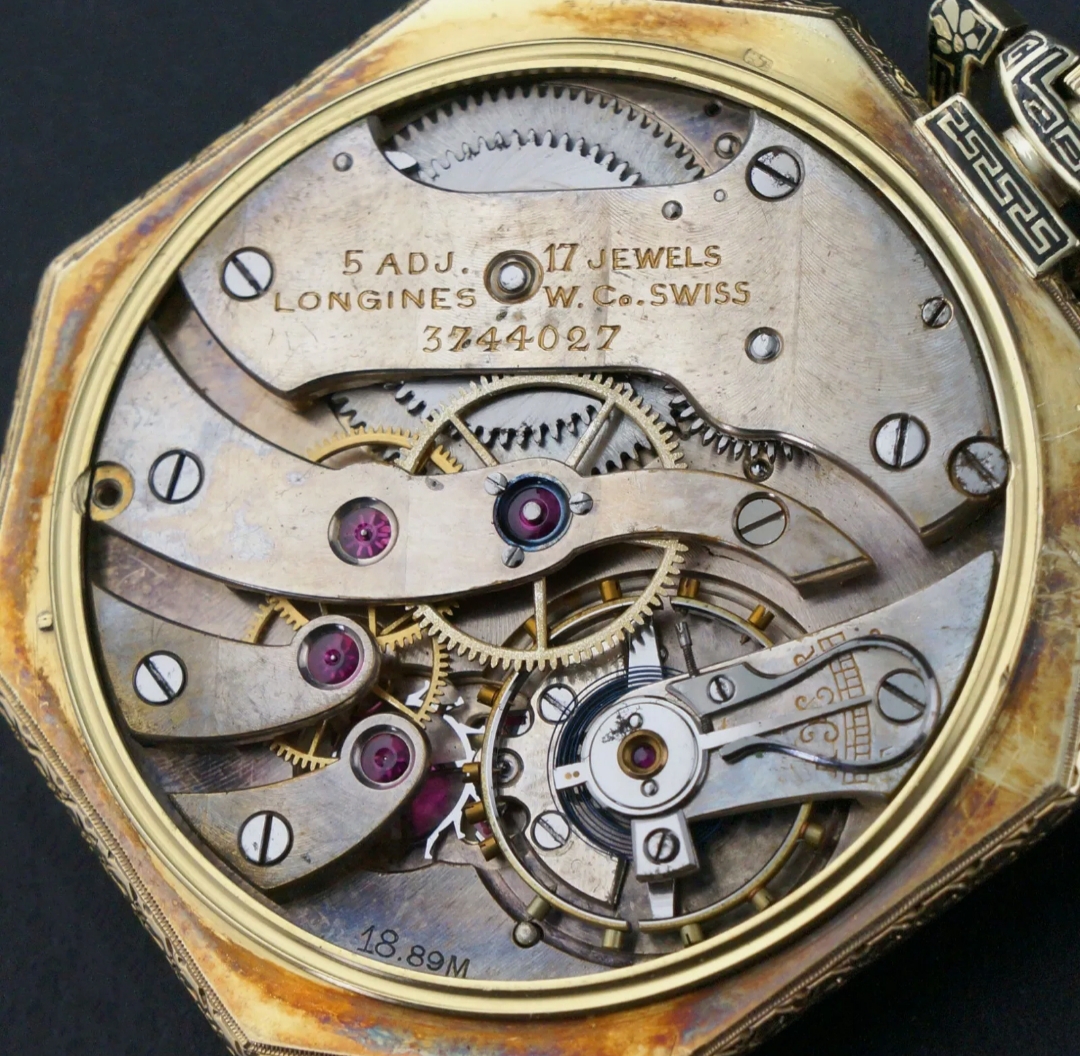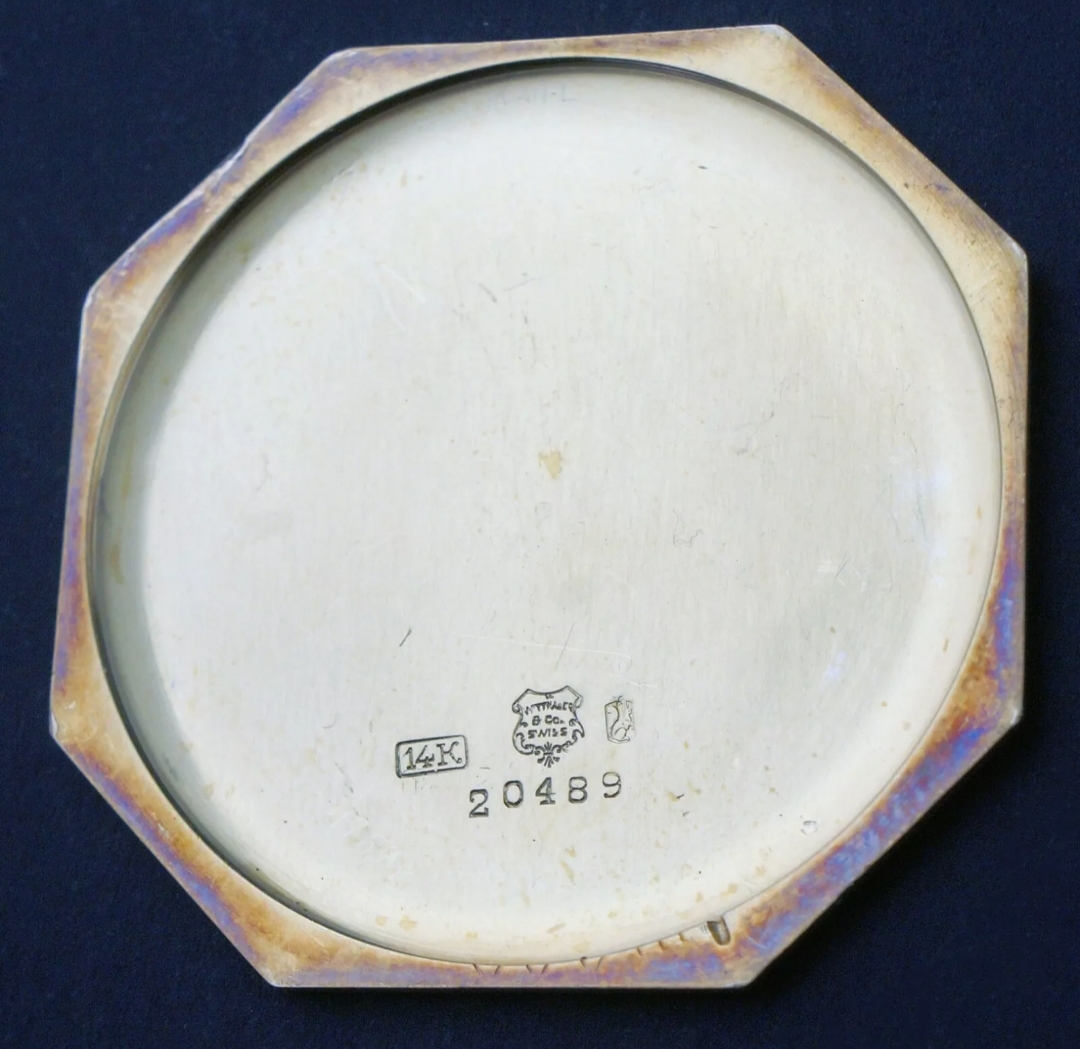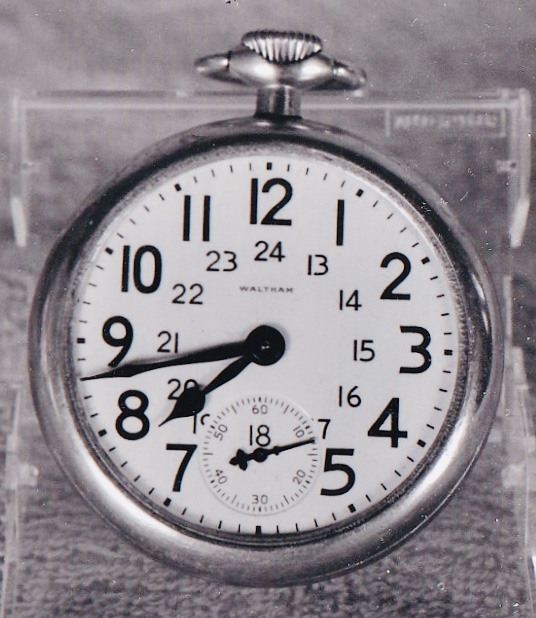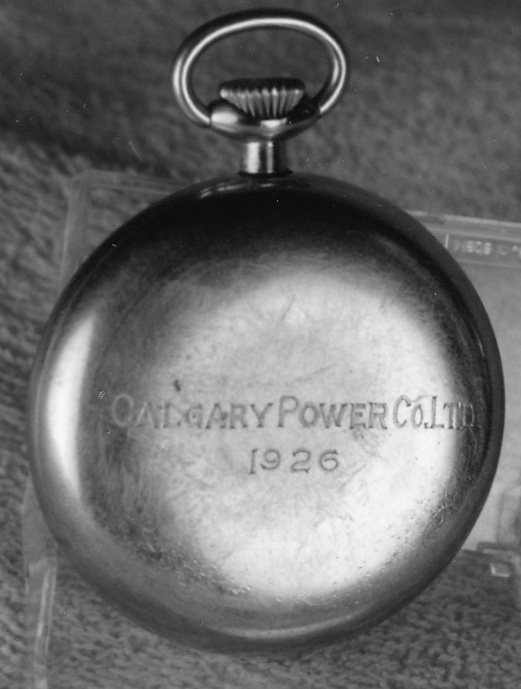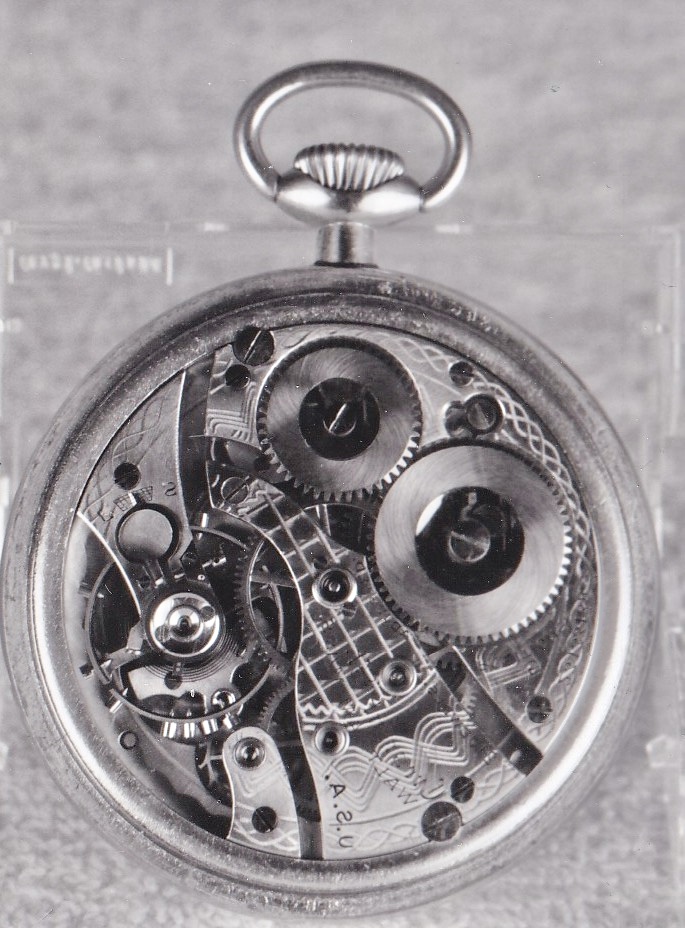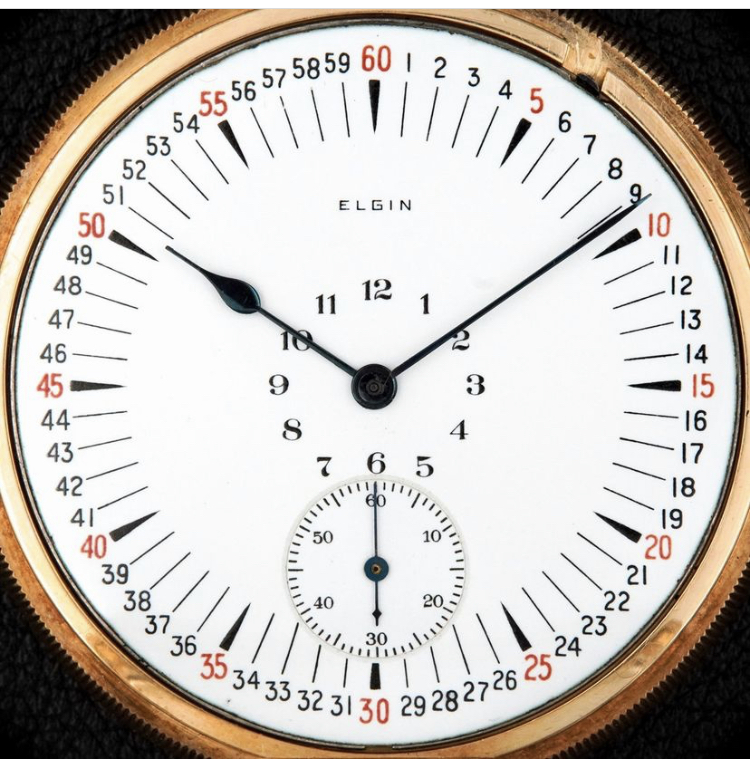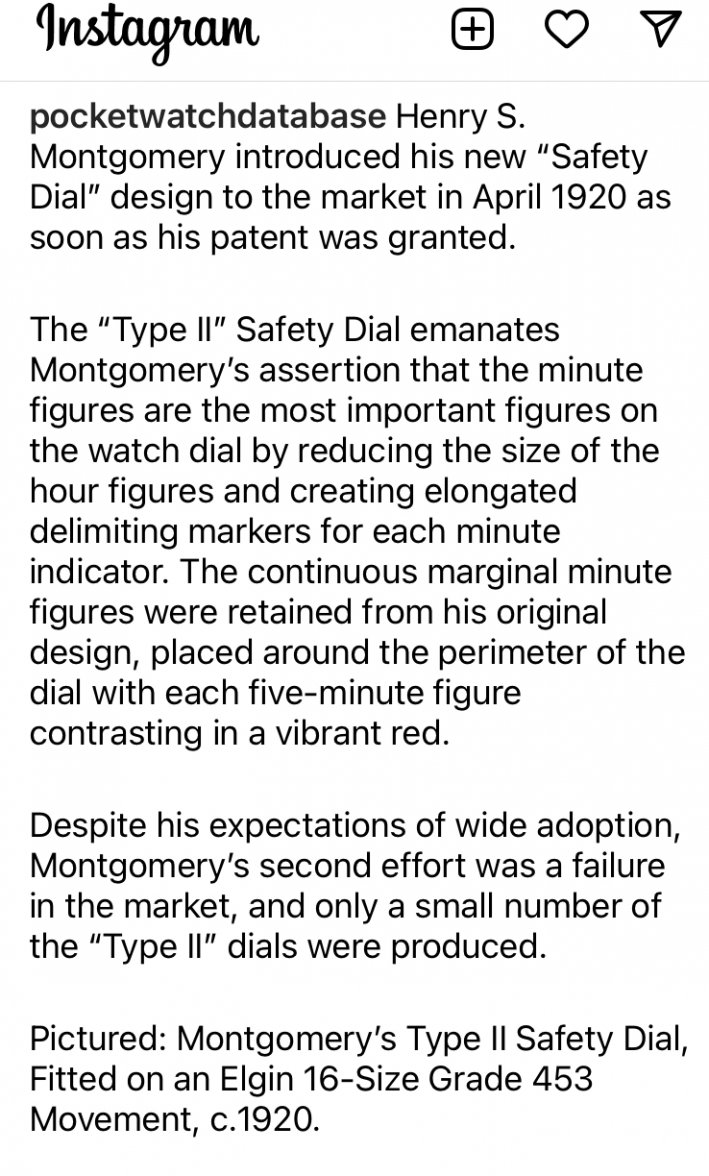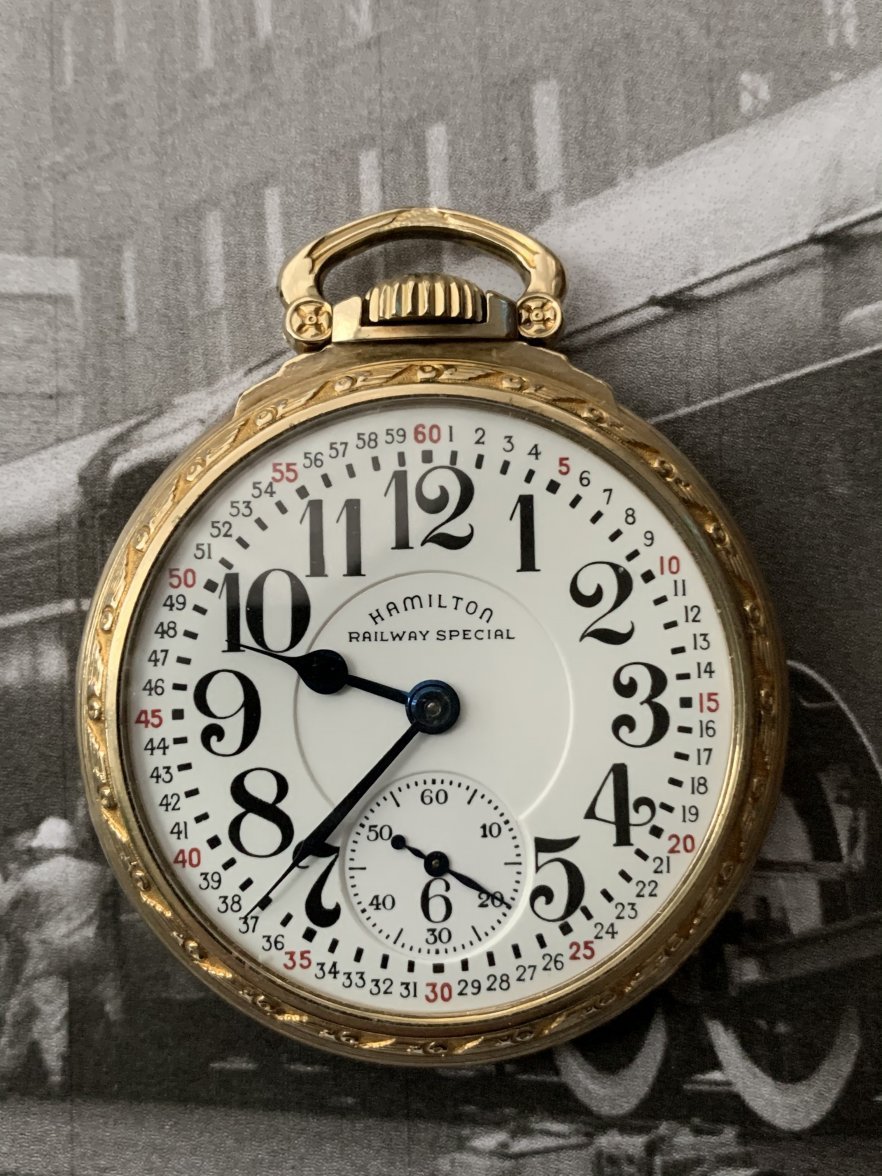The first experimental electric clocks made their appearance circa 1840. Probably powered by wet cell batteries. They didn’t become common until electric current distribution became more common. In those early years, a synchronous clock’s source of power was from hydro-electric sources. Synchronous clocks in North America generally relied on either 50 or 60-cycle power. If the power supplied to these clocks varied, the clocks would gain or lose time. As demand peaked, generators slowed down, and the clocks lost time. As demand dropped off and the generators speeded up, synchronous clocks would gain time.
To counter this problem, many power companies came up with systems to try to govern power plant output, to eliminate these variations in rate. In the mid 1920s, our local power source instituted a system that involved the use of the subject Waltham, 21-jewel Crescent Street model pocket watch. The Waltham was kept in plain view, in the control room. At the beginning of each shift, the board operator at the power plant, would make certain the Waltham was wound, then he would telephone the National Research Council to get the correct time, then to re-set the Waltham as required.
On the wall in the control room was a synchronous electric clock which took its 60-cycle power off the mains. During his shift, the operator would compare the time on the synchronous clock with the time on the Waltham, and he would adjust the flow of water past the generators, in order the keep the synchronous clock on the wall, on time. And thereby, every synchronous clock in every home and office on time, as well. By the early 1930s, our local power source found automated ways of doing this, and the Crescent Street was retired.
If any reader has access to NAWCC BULLETIN issue 308 from June 1997, check out the article I wrote on Frederick Stranack Gaskell who was an inventive genius who designed and built magnificent clocks, and also was the fellow who automated our local power company. Upon he retirement in the 1960s, our local power company presented him with the Waltham Crescent Street. To the watch.
The skinny on the watch:
https://pocketwatchdatabase.com/search/result/waltham/23133136
